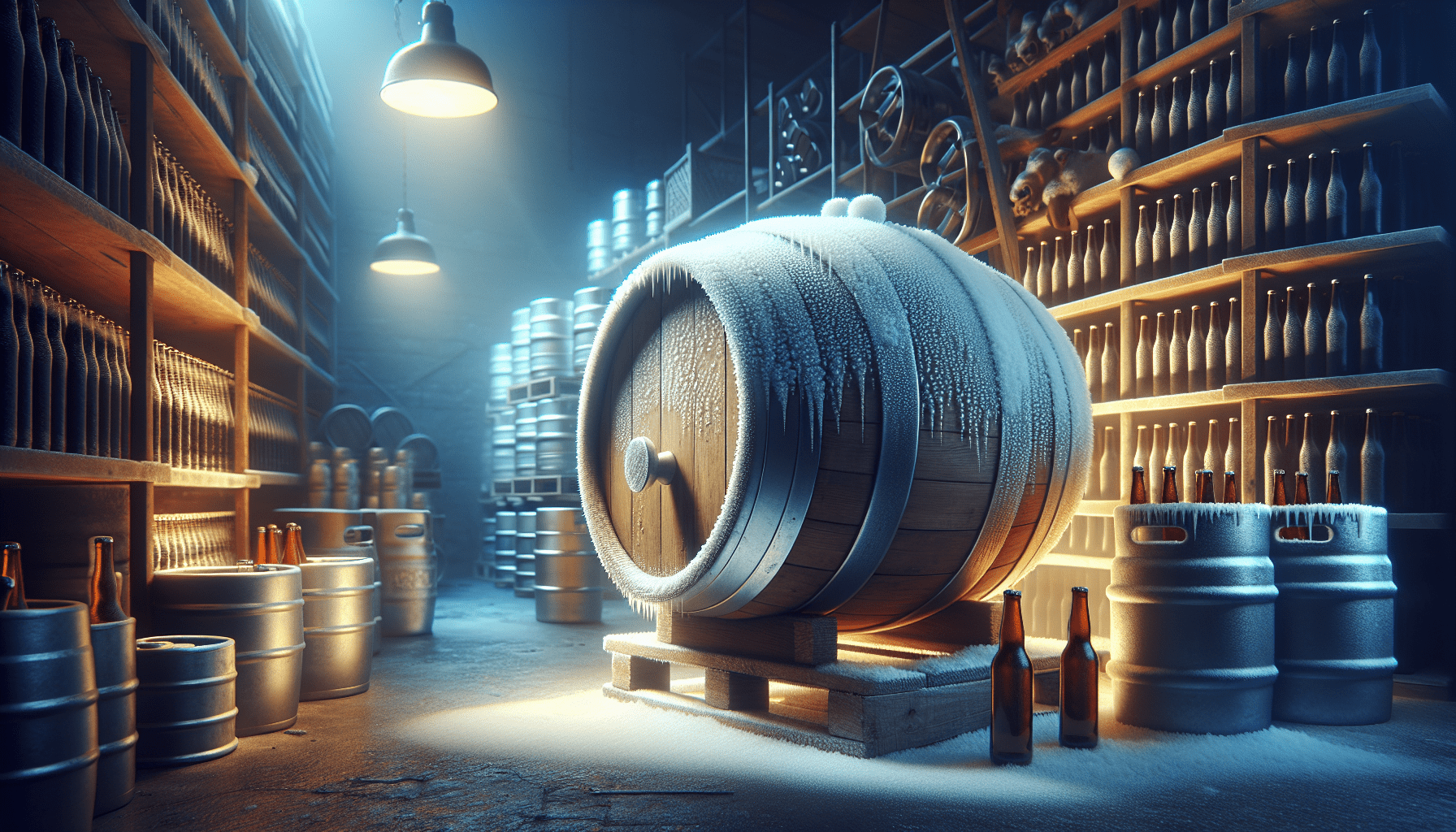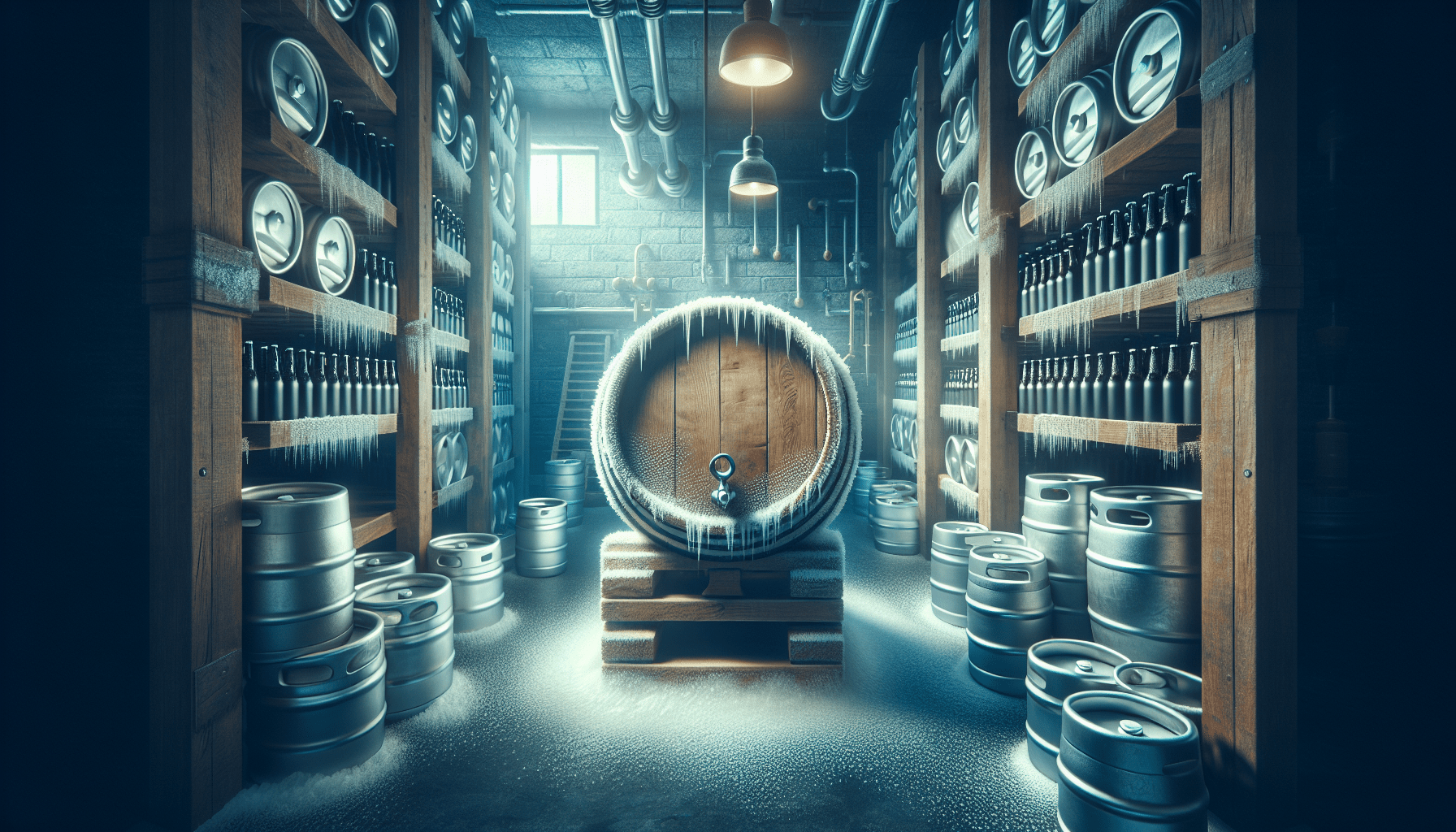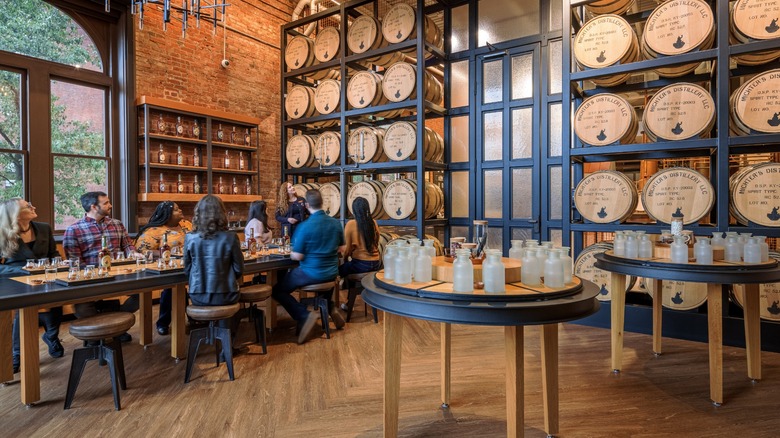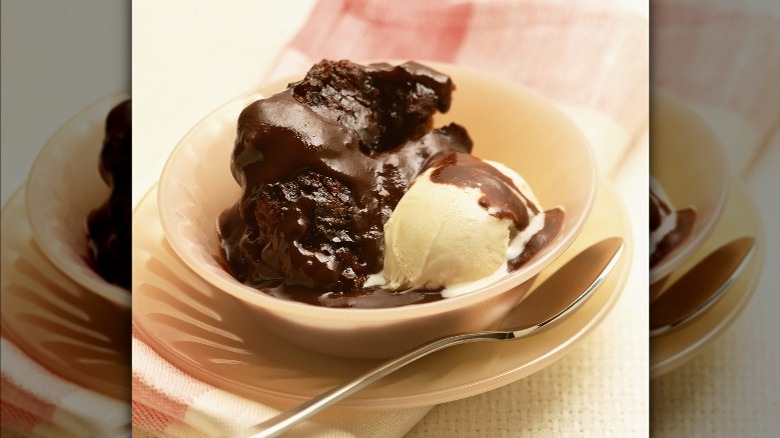NISHEL Travel Toiletry Bag for women, Portable Hanging Organizer for Full-Sized Shampoo, Conditioner, Brushes Set, Makeup Accessories, Large Size, Pink
$21.99 (as of December 20, 2024 21:41 GMT +00:00 - More infoProduct prices and availability are accurate as of the date/time indicated and are subject to change. Any price and availability information displayed on [relevant Amazon Site(s), as applicable] at the time of purchase will apply to the purchase of this product.)The age-old problem of keeping your beer tasting its best is no longer a mystery, thanks to the 3-30-300 rule that breweries swear by. This simple yet effective guideline helps you manage the storage of your beer based on how temperature affects its quality. If you want to make sure your favorite brew doesn’t lose its flavor, aroma, or texture, you need to pay attention to how long you keep it at certain temperatures; 90 degrees Fahrenheit for three days, 72 degrees Fahrenheit for 30 days, or 38 degrees Fahrenheit for 300 days. Knowing this rule will save you from those unfortunate moments of cracking open a once-great beer only to find it flat and lifeless. So, next time you bring beer home, remember: cooler and more stable temperatures are your friends. Have you ever accidentally left a case of beer in your car during the summer? You may have opened it later to discover the flavor had changed and your beer was flat. You just tasted the 3-30-300 rule in action.

Get an Official Zagat Restaurant Guide
Understanding the 3-30-300 Rule
The 3-30-300 rule is a guideline that breweries and other beer producers swear by for storing beer at optimal temperatures. It’s all about preserving the essence of your brew—its flavor, texture, and overall experience. Let’s dive deep into this magical rule and why it’s essential for your beloved beer.
Why Temperature Matters
Beer is a delicate beverage, and its natural components can be significantly impacted by temperature and oxygenation. When these factors are not controlled, they degrade the beer, changing its smell, flavor, and texture. To grasp the importance of the 3-30-300 rule, you first need to understand why temperature management is crucial for the longevity and quality of your beer.
Degradation Paths
The 3-30-300 rule states that beer will degrade at the same rate under the following conditions:
- 90 degrees Fahrenheit (32 degrees Celsius) for three days
- 72 degrees Fahrenheit (22 degrees Celsius) for 30 days
- 38 degrees Fahrenheit (3 degrees Celsius) for 300 days
This degradation happens because higher temperatures speed up the chemical reactions that change beer’s flavor profile. Each temperature range is indicative of how long your beer will last before noticeable quality declines.
Common Misconceptions
One common myth is that beer is highly sensitive to temperature changes, such as moving from hot to cold environments. However, this isn’t entirely accurate. The sudden temperature changes won’t instantly ruin your beer, but the rule’s focus is on consistent exposures over defined periods. The same flavor loss ultimately happens regardless of the environment—it merely takes longer at cooler temperatures.
How to Store Your Beer for Optimal Longevity
Now that you understand the 3-30-300 rule, let’s talk about the best ways to store your beer to keep it tasting great for as long as possible.
Refrigeration is Key
For optimal shelf life, store your beer in a refrigerator. Cool environments slow down the degradation process, ensuring that your beer maintains its flavor and carbonation for a more extended period.
Store Upright
Always store cans and bottles upright. This helps preserve the foamy, bubbly texture of your beer. When beer is stored on its side, greater surface area contact occurs between the beer and the cap, which can potentially lead to oxidation and flavor changes.
Consider Your Kegs
Storage is particularly crucial for kegs. These large containers should remain in a cool, dark space with minimal temperature fluctuations. This controlled environment helps maintain the beer’s quality from the first pour to the last.
Buying Beer: What to Look For
When buying beer from a brewery or store, take note of the manufacturing date. This little detail can provide insight into how soon your beer needs refrigeration. Here’s a simple guideline:
| Beer Age | Recommended Action |
|---|---|
| Recently made | Can be stored at room temperature for a bit |
| Approaching 30 days | Get it into the refrigerator ASAP |
Knowing when your beer was made can help you prioritize which beers to refrigerate first, ensuring that none of your brews go bad prematurely.
Practical Tips for Everyday Storage
Let’s move from theory to practice. Here are some easy-to-follow tips for storing your beer in different scenarios:
At Home
In your home, designate a space in your refrigerator specifically for beer. This allows you to keep an eye on your beer storage easily. Make sure it’s not in the door, as this area experiences frequent temperature changes.
During Transport
If you’re transporting beer, use a cooler with ice packs. This helps maintain a stable temperature, especially during long trips. Upon reaching your destination, transfer the beer to a refrigerator as soon as possible.
Outdoor Events
For picnics or BBQs, portable coolers are your best friends. Regularly replenish ice packs to keep your beer cold. A little preparation goes a long way in ensuring your beer stays fresh and flavorful.

Get an Official Zagat Restaurant Guide
Understanding Flavor Degradation
Have you ever tasted a beer that just seemed off? That’s likely due to flavor degradation, a common issue when beer isn’t stored correctly. Let’s dig into what happens to beer over time and how the 3-30-300 rule helps prevent these unwanted changes.
Temperature-Induced Changes
As we discussed earlier, higher temperatures speed up the chemical reactions in beer, leading to flavor changes. In just three days at 90 degrees Fahrenheit, your beer can taste markedly different due to accelerated aging processes.
Room Temperature Storage
Storing beer at room temperature (around 72 degrees Fahrenheit) is common but not ideal for long durations. Over 30 days, you’ll start noticing subtle changes in flavor, aroma, and texture. While not immediately detrimental, these changes accumulate, affecting the beer’s overall quality.
Longevity in Cold Environments
Storing beer at 38 degrees Fahrenheit can keep it fresh for up to 300 days. This long-term storage capability is particularly beneficial for those who prefer buying beer in bulk or enjoy aging certain types of beer. The colder temperature slows down the aging process, preserving your beer’s integrity.
The Role of Oxygenation
Besides temperature, oxygenation is another critical factor affecting beer quality. Exposure to oxygen can lead to oxidation, turning your once refreshing beer into a stale and flat beverage.
How Oxidation Occurs
Oxidation can occur during various stages, from brewing to storage. Even the smallest amount of oxygen trapped in a bottle or can initiate chemical reactions that degrade the beer’s quality.
Avoiding Oxidation
To minimize oxidation:
- Ensure bottles and cans are sealed properly.
- Store beer upright to reduce the amount of surface area exposed to oxygen.
- Limit the time beer is exposed to the air after opening.
Signs of Oxidation
You might be dealing with an oxidized beer if you notice:
- A cardboard-like taste
- A significant loss of aroma
- Dull or flat flavors
Monitoring these signs can help you identify and avoid drinking spoiled beer.
The Science Behind Beer Storage
While we’ve covered practical tips and guidelines, understanding the science behind beer storage can offer deeper insights into why the 3-30-300 rule is so effective.
Chemical Reactions
Beer is a complex mix of water, malt, hops, and yeast. When stored improperly, these components undergo unwanted chemical reactions. For example:
- Hops can degrade, leading to a loss of bitterness and aroma.
- Malt components can oxidize, resulting in an unpleasant sweetness and cardboard-like flavors.
Understanding these reactions helps appreciate the importance of proper storage.
Microbial Growth
Improperly stored beer can also become a breeding ground for microorganisms. While most commercial beers have been pasteurized or filtered to remove microorganisms, any that remain can spoil the beer. Proper storage prevents these critters from ruining your drink.
Different Beer Types and Storage Needs
Not all beers are created equal, and different types have unique storage requirements. Let’s explore how different styles react to storage conditions.
Lighter Beers
Beers like lagers and pilsners are more susceptible to temperature fluctuations due to their delicate flavor profiles. They benefit the most from strict adherence to the 3-30-300 rule.
Dark Beers
Darker beers like stouts and porters have more robust flavors that may withstand slight temperature changes better than lighter beers. However, they still benefit from proper storage to maintain their rich, complex profiles.
Hoppy Beers
IPAs and other hoppy beers are prone to quicker degradation due to the volatile nature of hop oils. These beers should be consumed fresh and stored cold to preserve their signature flavors and aromas.
Aged Beers
Certain beers, like barleywines or Belgian ales, are meant to be aged. These beers can develop new flavors over time, but even these should be stored at consistent, cooler temperatures to ensure controlled aging.
Common Storage Mistakes to Avoid
Even the most seasoned beer enthusiasts can make mistakes in beer storage. Here are some common pitfalls and how to avoid them.
Exposure to Light
Light, especially UV light, can cause a chemical reaction in beer, leading to “skunky” flavors. Always store beer in a dark place, whether it’s in a closet, basement, or simply a cover over your beer shelf.
Frequent Temperature Changes
Repeatedly moving beer in and out of the refrigerator or exposing it to fluctuating room temperatures can accelerate degradation. Keep your beer in a stable environment as much as possible.
Storing Beer in the Freezer
While occasionally chilling a beer in the freezer for a quick cool-down is okay, long-term storage in freezing temperatures can cause issues. The beer can freeze and expand, potentially breaking the container and affecting the carbonation once thawed.
Conclusion
The 3-30-300 rule is a tried-and-true method for ensuring your beer tastes as good as it should, for as long as possible. By understanding the science behind beer degradation, avoiding common storage mistakes, and applying practical storage tips, you can enjoy your beer at its best.
So next time you get home with a new case of your favorite brew, remember the 3-30-300 rule. Store it right, treat it well, and savor each sip as it was meant to be enjoyed.
Here’s to better-tasting beer and happier drinking experiences! Cheers!
Get an Official Zagat Restaurant Guide






